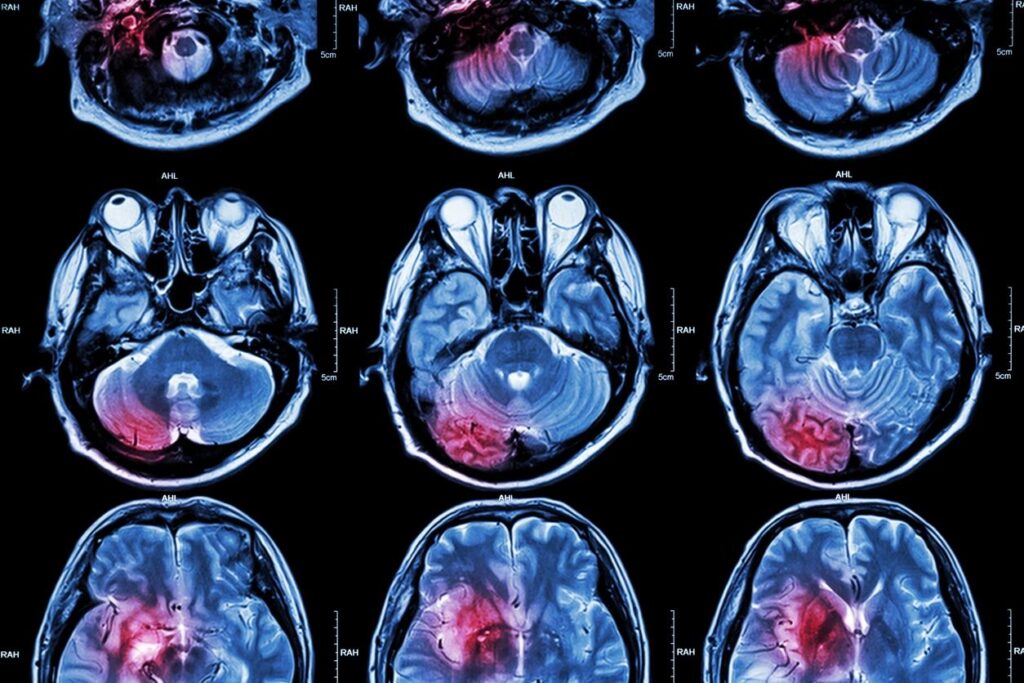Serious Allegations of Harm to Patients by UNM Hospital Misuse of Medical Device in Neurosurgery Department – Part Two



Several UNM Neurosurgery Department Faculty, Attending Physicians, Mid-level Providers, & Learners Told The Candle that Patients Were Harmed by Use of New Medical Device
The following Breaking News provides the outline and chronology associated with concerns of alleged harm done to patients of the Neurosurgery department at the University of New Mexico Hospital – harm which may have led to loss of life.
The concerns were raised by doctors and clinicians who have communicated with The Candle since we published stories about the settlement of the Djabollah whistleblower lawsuit, and a culture fostering secrecy, and intimidation and retaliation towards employees who speak out about problems at the Health Sciences Center operations – which includes the UNM Hospital.
The Candle acknowledges the following about the device reported on below, including from a report that raised concerns of patient safety when a renowned research hospital shut down its randomized clinical trial (RCT) and wrote that IRRAflow “builds on the novel principle of controlled intraventricular perfusion, providing a potential leap forward in the treatment of hemorrhagic stroke.”
From research conducted by The Candle, to date, that “single-blinded, phase 2 randomized clinical trial” on the IRRAflow device, occupies the most valued degree of evidence on what is commonly known as the pyramid of hierarchy used for medical research.
So, it is important to note, as written further in the report on the RCT, “Despite the potential, the study was terminated early due to safety concerns with the intervention. Our findings revealed a significant 6-fold increase in SAE incidence with intraventricular lavage compared with EVD.” [SAE is abbreviation for Serious Adverse Event.]
In lay-person’s terms … use of the device should be with the utmost caution and observation, which is what sources argue has not been the practice at UNM.
(NOTE: Tomorrow, The Candle will be publishing more detailed reporting on the failure of UNM officials to be transparent about alleged harm done to patients at the UNM Hospital in the use of a relatively new medical device in neurosurgery applications.)
Over the past few months, The Candle spoke with several individuals with first hand knowledge of the use of the device referred to in this reporting at UNM in the neurosurgery department and was told that some of the harm done to patients may have been fatal – they have requested anonymity due to their fear of retaliation by UNM officials for speaking out publicly about their concerns, and point to the recent cases of retaliation that settled out of court, and which are referred to in the following chronology.
2019 through 2023
The University of New Mexico Hospital Team (led by UNM School of Medicine’s former Assistant Professor Andrew Carlson, MD) is identified as “Valued Partner” by IRRAS, the developer and marketer of IRRAflow. IRRAS, and Carlson, have promoted the use and safety of the IRRAflow device.
September 2022
IRRAS CEO writes of the importance of UNM’s involvement in the roll out of production and sales of the IRRAflow in an Interim Financial Report (January through September 2022), “It is important for our team to increase the rate of product adoption, and the generation of impactful clinical data will play a key role in this effort. During the quarter, a case series from Dr. Andrew Carlson and the team from the University of New Mexico Hospital was published in the peer-reviewed Operative Neurosurgery journal. This manuscript highlighted the effectiveness of IRRAflow in the treatment of intraparenchymal hemorrhage for the first time.…” [Emphasis added.]
October 2023
JAMA Network Open Publishes Results of 2022 Denmark Randomized Clinical Trial (RCT) of IRRAflow, which, in consultation with an Independent Team, shut Itself down due to safety concerns for patients.
The report is titled “Intraventricular Lavage vs External Ventricular Drainage for Intraventricular Hemorrhage. A Randomized Clinical Trial,” as published in JAMA Network Open – Neurology.
The report referred to above and done in Denmark states, among other things:
Key Points
“Question – Is ventricular lavage a safe and effective treatment of intraventricular hemorrhage compared with passive drainage?”
“Findings – This randomized clinical trial of 21 patients comparing intraventricular lavage with standard drainage treatment found significantly higher risks of SAEs and catheter occlusions in the intervention group. The trial was terminated early, as recommended by an independent data safety monitoring board, due to safety concerns at preplanned interim analysis of 20 patients.”
“Meaning – These findings suggest that caution should be taken when using intraventricular lavage for IVH treatment and technology adaptations should be implemented to mitigate future adverse events.”
The Denmark published account also notes in its “Discussion” section:
“We conducted a controlled randomized clinical trial of the safety and efficacy of the intraventricular lavage technology for active washout of IVH compared with standard practice passive EVD. Intraventricular lavage builds on the novel principle of controlled intraventricular perfusion, providing a potential leap forward in the treatment of hemorrhagic stroke. The method proposedly facilitates IVH clearance and reduces the risks of catheter clotting and catheter-related central nervous system infections, thereby addressing key issues of IVH treatment.
“Despite the potential, the study was terminated early due to safety concerns with the
intervention. Our findings revealed a significant 6-fold increase in SAE incidence with intraventricular lavage compared with EVD. Furthermore, there was a significant 4.4-fold increase in the risk of catheter occlusion with intraventricular lavage, which was contrary to the primary outcome hypothesis.” [Emphasis added, also note that SAE is abbreviation for Significant Adverse Event.]
December 2023
The Accreditation Council for Graduate Medical Education (ACGME) receives Complaint detailing the UNM Neurosurgery department’s failure to address patient safety. The complaint outlined how UNM Neurosurgery leaders discourage transparent dialogue, intimidate, and retaliate against medical learners, residents and faculty when patient safety concerns are brought forward in faculty and regularly scheduled morbidity and mortality meetings.
2023 and 2024
Neurosurgery Leadership at UNM School of Medicine is notified of serious harm done to patients by UNM medical personnel when not properly administering the IRRAflow device.
January 2024
Neurosurgery Review publishes UNM retrospective study of patient files from 2019 through 2022, (a single-center case-control study including patients with IVH treated with EVD compared to IRRAflow).
It is entitled: Continuous irrigation with thrombolytics for intraventricular hemorrhage: case-control study.
The study’s UNM Team was led by Dr. Andrew Carlson, and they concluded IRRAflow is safe, suggesting future use in Clinical Trials.
However, Carlson’s UNM team never refers to the results of the Denmark Randomized Clinical Trial, which warned that the IRRAflow device “was encumbered with a significantly increased number of severe adverse events. Caution is recommended when using the device to ensure patient safety.”
February 2024
UNM quietly signed a settlement agreement on or about February 29, 2024, with Dr. Samantha Varela regarding her Human Rights Complaint which alleged bullying, retaliation, and discrimination of learners and residents at the UNM School of Medicine’s residency program.
August 2024
UNM President Garnett Stokes replaces Dr. Douglas Ziedonis with Dr. Mike Richards, who has taken over the position of Executive Vice President for Health Sciences and as CEO of the UNM Health System on an interim basis.
October 2024
The Candle reports that UNM settles whistleblower lawsuit for $2.1 million, with Hakim Djaballah, Ph.D., an internationally recognized leader in biochemistry and biotechnology, who had alleged he was fired by UNM officials after he informed them of concerns of potential fraud and poor laboratory practices by his predecessor. UNM had recruited Dr. Djaballah to be director of the UNM Center for Molecular Discovery (CMD) which was principally funded by UNM’s Comprehensive Cancer Center.
October 2024
Medical professionals at UNM School of Medicine reached out to The Candle about concerns that patients of the Neurosurgery Department treated at UNM Hospital with the IRRAflow device likely suffered serious harm and possible death due to inappropriate use of medical device.
October 2024
A report to the FDA MAUDE system regarding the IRRAflow device is filed, stating, “recent evidence suggests its application at unm has resulted in unnecessary harm to multiple patients due to careless use, inadequate training of medical personnel, and possible design flaws…Reports of severe infections, mechanical failures, and improper pressure settings causing intracranial pressure imbalances highlight the urgent need for proper training and guidelines to ensure safe and effective use of this device.”
December 2024 through January 2025
The Candle sends three detailed email/letters to UNM President Garnett Stokes, Mike Richards, MD (interim) Executive Vice President for Health Sciences, Patricia W. Finn, MD Dean & Professor of the UNM School of Medicine, and Kate Becker, JD, MPH, CEO, UNM Hospitals, and the UNM communications team, seeking an opportunity to speak with appropriately informed medical personnel about issues relative to the use of the IRRAflow device at UNM facilities.
Initially, UNM ignored our email.
After additional prodding, UNM responded with the following statement, “The University of New Mexico Health Sciences Center and UNM Hospital are dedicated to providing the highest quality care to our patients while maintaining strict adherence to patient safety protocols and ethical standards. We take all concerns about patient care seriously and have rigorous processes in place to investigate and address any issues that may arise. All our clinical practices are subject to stringent oversight and review processes to ensure patient safety and compliance with all applicable regulations.” (Click here to link to earlier story published by The Candle, which includes, at the end of the reporting, a copy of the letter sent to UNM.)
On three other occasions in January, The Candle asked for the opportunity to speak with appropriate medical professionals at UNM and got the following responses”
“The UNM Health Sciences Center and UNM Hospital currently use FDA approved IRRAflow and Hummingbird devices, when necessary, in the clinical care setting in accordance with FDA guidelines and safety regulations. In addition, we have no active clinical trials investigating the efficacy of the IRRAflow and Hummingbird devices. We are actively reviewing the recent concerns brought forward.” [Emphasis added.]
When asked about UNM reviewing its “actively reviewing the recent concerns brought forward,” we received the following response:
“We won’t be able to provide further information or documentation. UNM Hospital respects the confidentiality of patient safety work product, as required by law and as intended by the U.S. Department of Health and Human Services. This link provides additional information for you so that you can better understand regulations hospitals must follow around this issue.” Understanding Patient Safety Confidentiality | HHS.gov
And finally, this last Friday, January 10, 2025, UNM wrote in an email:
“Thanks for following up. At this time, we don’t have any further information to provide. However, as you know, if you’re seeking a certain document, UNM’s IPRA Office is always a resource for you.”
The Candle also communicated with Dr. Andrew Carlson, who is now affiliated with the University of Virginia School of Medicine, regarding the UNM report he led that was published in Neurosurgery Review in January 2024, as well as his experience with the use of the IRRAflow device in work at UNM SOM and UNMH.
Dr. Carlson responded to two communications sent to him, and the next story will report extensively on his responses and related information regarding the UNM produced paper as well as other publications (some of which he provided to The Candle, and others that The Candle also found in our research).
Update – Some Optimism?
It seems that President Garrett Stokes may be turning up the heat at UNM Health Sciences (HSC), since she removed Dr. Ziedonis from its leadership.
HSC is the parent of the School of Medicine and the UNM Hospital, as well as the research departments associated with the science programs.
On January 2, 2025, Ryan Boetel an editor with the Albuquerque Journal, reported another change at HSC, writing, “An accomplished brain surgeon has joined the University of New Mexico School of Medicine to oversee a residency program that has had several leadership and status changes in recent years, including losing and regaining its accreditation.“
Boetel continued, “Dr. Griffith Harsh is the new chair of neurosurgery at the medical school, effective Jan. 1. He was previously the chairman of the council that revoked the accreditation of the residency program he now oversees.
“He was most recently a professor of surgery and deputy director of the National Center for Interventional Biophotonic Technologies in Davis, California, and he is a former Julian R. Youmans chair in Neurological Surgery.”
Some of the same medical sources The Candle spoke with regarding this series of articles, expressed optimism that Dr. Harsh may provide a steady hand and restore some hope among personnel.